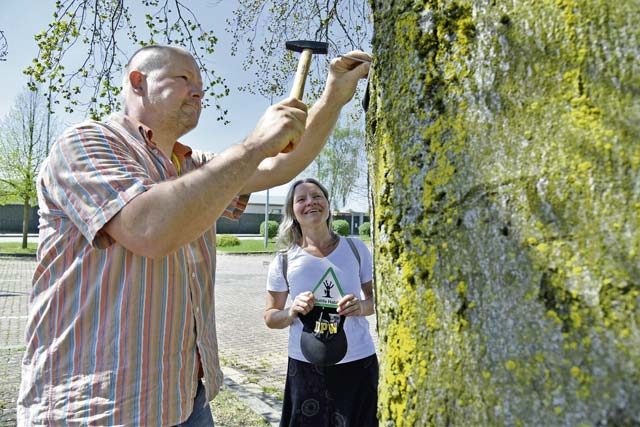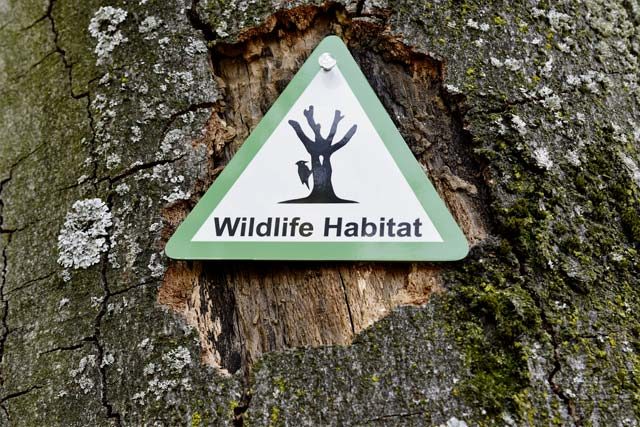
A rescue mission is underway, but this operation doesn’t involve helicopters, Humvees or Soldiers — just an Army of two from the Directorate of Public Works Environmental Office. Their mission: to protect the trees and habitats within the U.S. Army Garrison Rheinland-Pfalz by posting signs to educate and call attention to safeguarded areas, trees and wildlife.
The pair began their environmental awareness campaign a few months ago, said Claudia Weber, environmental engineer.
“We have a meadow at Sembach that used to be mowed on a regular basis, although the garrison wasn’t required to maintain the area,” she explained. “When the decision was made to reduce the mowing frequency, wild bees began inhabiting the meadow — and in Germany, wild bees are protected.”
Fortunately for the bees, the garrison’s decision improved their home, but as a result, the meadow looked overgrown and unkempt.
“People began complaining that the area looked neglected. That’s why we posted signs to let them know the grass isn’t long because it’s neglected — it’s a home for wildlife and insects,” Weber said.
Signs are also used to mark safeguarded trees — both living and dead, said Lutz Andres, urban tree manager and pest management coordinator.
Andres explained a situation where some landscapers wanted to cut down a tree trunk because it didn’t look aesthetically pleasing where it was located.
“I went to the location, looked at the tree and gave them permission to cut it,” Andres recalled. “When I got back to the office, I was told it was a valued tree, but I wasn’t aware of it. So, marking specific trees that should be preserved makes sense and will protect others in the future.”
Another more recent example took place during the construction of the new Defender Café Dining Facility at Rhine Ordnance Barracks, Weber said.
“During the construction of the dining facility, the contractors wanted to reduce the size of a 200-year-old tree to place trash dumpsters beneath it. I explained how old the tree was and asked if there was another area to place the containers. They agreed to put them elsewhere,” she said. “Unfortunately, they had already broken ground under the tree and damaged some of its roots. We had to call in a tree expert to seal the roots properly and keep the damage from spreading. So, the tree was saved and the trash location was changed, but posting signs would have prevented the damage.”
Some people may think, “So what? It’s just a tree. You can plant another one.” The issue becomes the amount of time it would take to replicate a tree of that size. It may take several hundred years — if it’s healthy and survives that long. Signs may save trees serving as homes for other animals and insects.
But it’s not just live trees that need protecting, said Andres. Dead trees and stumps are sometimes protected to preserve the biological network living inside, he said. And saving these ecosystems supports biodiversity and keeps the network thriving.
Caves and some protected shrub areas within the garrison footprint will also carry signs to educate and inform people of what and where particular ecological elements are.
“We opened an old mine on Baumholder, and now we are waiting for bats and amphibians to move in,” Weber said. They are installing signs there to make people aware and respectful of these habitats, since bats are a protected species in Germany.
“We want people to understand what species inhabit the caves, and we ask people not to disturb them,” she said.
Although these garrison signs are small and simple, they convey an important message — safeguarding the garrison’s natural resources protects both the environment and humans, Andres said.
“All species have rights like we do to live, and we’ve already reduced so many habitats already; therefore, we need to protect what we can,” he concluded. “We are required to be good stewards of protected species and habitats, and these signs brings us one step closer to that.”



